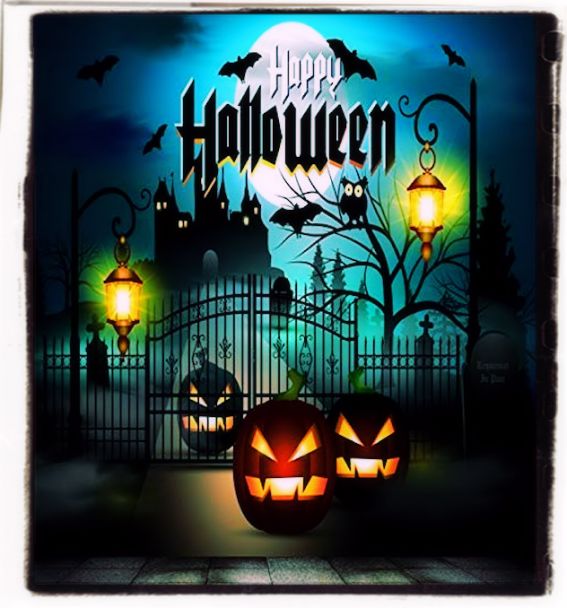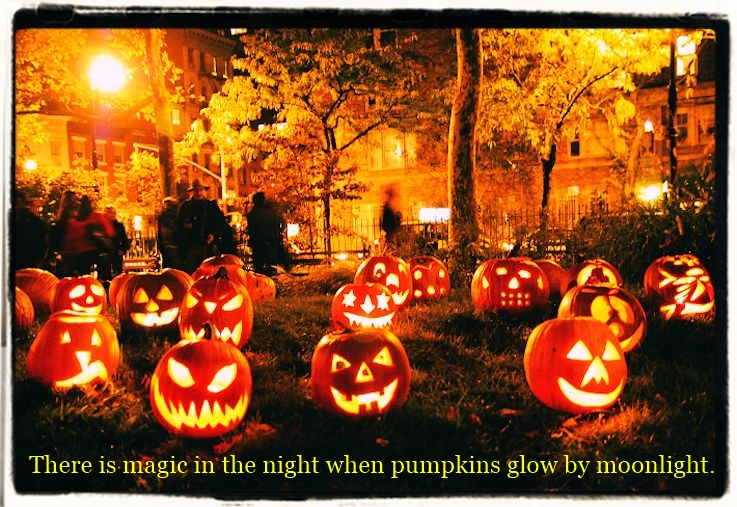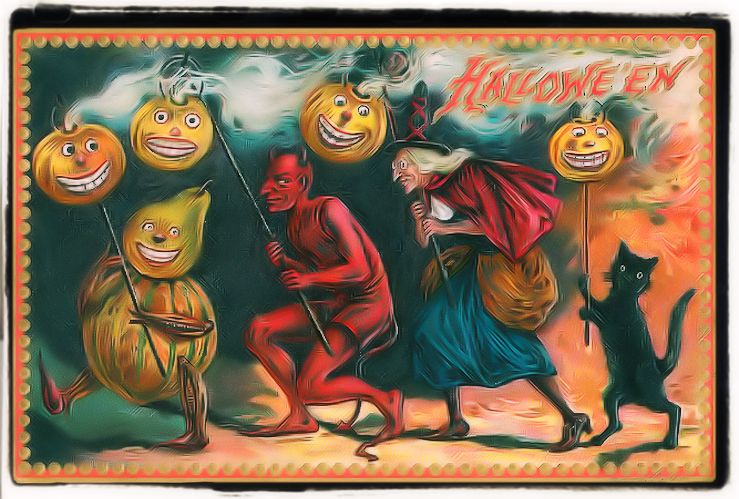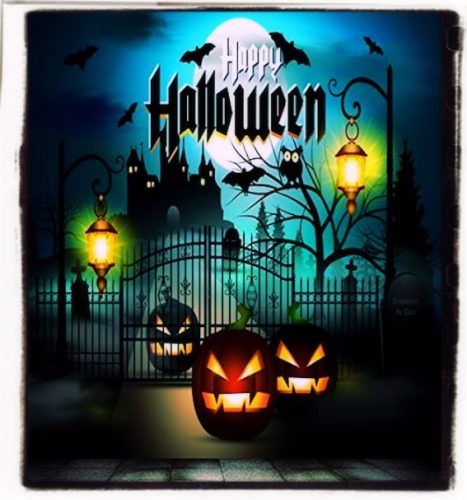
Halloween holiday, October 31, story and legend. As the eve of All Saints’ Day, it is a religious holiday among some Christians.
Halloween for the year 2023 is celebrated/observed on Tuesday, October 31st.
Double, double toil and trouble; Fire burn, and cauldron bubble.
William Shakespeare
When witches go riding, and black cats are seen, the moon laughs and whispers ‘tis near Halloween.
Anonymous
Use your imagination not to scare yourself to death but to inspire yourself to life.
Adele Brookman.
Don’t let past ghosts spook away present gifts.
Jane Lee Logan.
Whatever costumes you wear, don’t forget your tiara even if it’s only on the inside.
Jane Lee Logan.
Where there is no imagination there is no fear.
Author Unknown.
Be the energy you want to attract.
Author Unknown
I love Halloween, and I love that feeling: the cold air, the spooky dangers lurking around the corner.
Evan Peters
Every day is Halloween, isn’t it? For some of us.
Tim Burton
There is magic in the night when pumpkins glow by moonlight.
Anonymous
Shadows of a thousand years rise again unseen. Voices whisper in the trees, “Tonight is Halloween!”
Dexter Kozen
HALLOWEEN also called All Hallows’ Eve
holiday, October 31, now observed largely as a secular celebration. As the eve of All Saints’ Day, it is a religious holiday among some Christians.
Halloween had its origins in the festival of Samhain among the Celts of ancient Britain and Ireland. November 1 was considered the end of the summer period, the date on which the herds were returned from pasture and land tenures were renewed. The festival of Samhain is a celebration of the end of the harvest season in Gaelic culture, and is sometimes regarded as the “Celtic New Year.” The festivals would frequently involve bonfires, into which bones of slaughtered livestock were thrown. Costumes and masks were also worn at the festivals in an attempt to mimic the evil spirits or placate themTraditionally, the festival was a time used by the ancient Celtic pagans to take stock of supplies and slaughter livestock for winter stores. The ancient Gaels believed that on October 31, now known as Halloween, the boundary between the living and the deceased dissolved, and the dead become dangerous for the living by causing problems such as sickness or damaged crops. It was also a time when the souls of those who had died were believed to return to visit their homes. People set bonfires on hilltops for relighting their hearth fires for the winter and to frighten away evil spirits, and they sometimes wore masks and other disguises to avoid being recognized by the ghosts thought to be present. It was in these ways that beings such as witches, hobgoblins, fairies, and demons came to be associated with the day. The period was also thought to be favourable for divination on matters such as marriage, health, and death. When the Romans conquered the Celts in the 1st century ad, they added their own festivals of Feralia, commemorating the passing of the dead, and of Pomona, the goddess of the harvest.
In the 7th century ad, Pope Boniface IV established All Saints’ Day, originally on May 13, and in the following century, perhaps in an effort to supplant the pagan holiday with a Christian observance, it was moved to November 1. The evening before All Saints’ Day became a holy, or hallowed, eve and thus Halloween. By the end of the Middle Ages, the secular and the sacred days had merged. The Reformation essentially put an end to the religious holiday among Protestants, although in Britain especially Halloween continued to be celebrated as a secular holiday. Along with other festivities, the celebration of Halloween was largely forbidden among the early American colonists, although in the 1800s there developed festivals that marked the harvest and incorporated elements of Halloween. When large numbers of immigrants, including the Irish, went to the United States beginning in the mid 19th century, they took their Halloween customs with them, and in the 20th century Halloween became one of the principal U.S. holidays, particularly among children.

Halloween flourished in Ireland, Scotland, Wales, parts of England and in isolated localities such as the Orkney and Shetland Islands. In these places during this celebration the inhabitants lighted bonfires on hilltops and played Halloween games such as “Bob apple.” They also engaged in divination by such means as pulling kale, placing stones or nuts in the fire and throwing a shoe over the house. Some divination occured even on the church porch, which was believed to be an especially reliable place to learn of future events. Pranks and mischief were also common on Halloween in rural areas of Ireland and Great Britain. Wandering groups of celebrants blocked doors of houses with carts, carried away gates and plows, tapped on windows, threw vegetables at doors and covered chimneys with turf so that smoke could not escape. In some places, girls and boys dressed in clothing of the opposite sex and, wearing masks, visited neighbours to play tricks. These activities generally resembled the harmful and mischievous behaviour attributed to witches, fairies and goblins. The contenporary “trick or treat” custom resembles an ancient Irish practice associated with Allhallows Eve. Groups of peasants went from house to house demanding food and other gift in preparation for the evening’s festivities. Prosperity was assured for liberal donors and threats were made against stingy ones.
Immigrants from Great Britain and Ireland took secular Halloween customs to the U.S., but the festival did not become popular in that country until the latter part of the 19th century. This may have been because it had long been popular with the Irish, who migrated there in large numbers after 1840. In any event, a number of the traditional Halloweens symbols and folk practice appeared in the U.S. during the late 1800s. Among these were the figures of the witch, the black cat, the death’s head cut from a pumpkin, candles, bobbing for apples, the trick or treat custom, masks, parties and pranks. Though some churches observed Halloween with religious services, most persons regarded it as a secular festival. This reflected the prevailing American Protestant attitude toward a great many church festivals and holy days. During the latter decades of the 19th century, Halloween pranks and mischief became common in the U.S. and often descended to vandalism. In rural areas, fences were built across roads, wagons placed on top of barns, gates removed, outbuildings overturned and farm animals hidden. In cities and towns, “spooks” placed porch furniture on top of telephone poles, overturned garbage cans, opened water faucets and soaped windows in houses and stores. In some cities overenthusiastic celebrants filled cloth sacks with flour and rubbed these against the clothing of passers-by. In the course of the 20th century, the American public became less tolerant of Halloween pranks. This was the result, in large part, of a different mode of life, brought about by increasing urbanization and the ubiquity of the automobile. These factors altered the material environment and lessened the vitality of folk beliefs and customs. In addition, Halloween mischief became very costly to property owners and was of serious concern to public officials.
Consequently, civic authorities and private citizens attempted to deal with this difficulty by both repressive and educational means. As early as 1908 some U.S. community sponsored Halloween parties for the young in the hope of preventing injury to life or possessions. The police, local merchants or civic groups organized these festivities, and both parents and teachers cautioned children against vandalism. In some istances, merchants even invited the young to soap the windows of their stores on Halloween in the belief that this might lessen property damage. These efforts had only limited success. Nowadays the tendency to manipulate rather than to celebrate folk festivals such as Halloween is charateristic of the 20th century. It reflects the growing influence of a rational outlook on life and the loss of interest in imagination and fantasy. The secular character of contemporary culture is also reflected in public neglect of the religious significance of Halloween as well as in progressive loss of its folk vitality. Children are least effected by this disenchantment and consequently the more important folk occasions tend to be dominated by the young.
As a secular holiday, Halloween has come to be associated with a number of activities. One is the practice of pulling usually harmless pranks. Celebrants wear masks and costumes for parties and for trick-or-treating A group of children trick-or-treating on Halloween. It is thought to have derived from the British practice of allowing the poor to beg for food, called “soul cakes.” Trick-or-treaters go from house to house with the threat that they will pull a trick if they do not receive a treat, usually candy. Halloween parties often include games such as bobbing for apples, perhaps derived from the Roman celebration of Pomona. Along with skeletons and black cats, the holiday has incorporated scary beings such as ghosts, witches, and vampires into the celebration. Another symbol is the jack-o’-lantern, a hollowed-out pumpkin, originally a turnip, carved into a demonic face and lit with a candle inside. Since the mid 20th century, the United Nations Children’s Fund (UNICEF) has attempted to make the collection of money for its programs a part of Halloween.
The concept of ‘trick or treating’ is a relatively modern custom but the origins are steeped much deeper in history. The concept of offering something at the doorstep in return for food or drink goes back way beyond the middle ages and crosses the oceans to Scotland, Ireland and England. It is only since the late 1920’s that Halloween has been a popular tradition in the US. The earliest recording of the term “trick or treat” appeared in 1927, in Blackie, Alberta in which “Hallowe’en provided an opportunity for real strenuous fun”. In American holiday custom, a hollowed-out-pumpkin lantern that is displayed on Halloween. The surface of the pumpkin is carved to resemble a face. Light from a candle inserted inside can be seen flickering through the jack-o’-lantern’s cutout eyes, nose, and usually grotesquely grinning mouth. The custom originated in the British Isles, with a large turnip or other vegetable rather than a pumpkin, fruit is also used in puddings and soups. It may be used interchangeably with squash in various prepared dishes. Pumpkins are used in the United States as Halloween decorations, one such being the jack-o’-lantern, in which the interior of the pumpkin is cleaned out and a light inserted to shine through a face carved through the wall of the fruit.
Dictionary
Prank: A mischievous trick or practical joke.
Prick: a. The act of piercing or pricking. b. The sensation of being pierced or pricked. 3. Vulgar Slang A penis. 4. Vulgar Slang A person regarded as highly unpleasant, especially a male.
Prat: Slang The buttocks. Slang an incompetent or ineffectual person: often used as a term of abuse. (Pirla)
Spook: 1. Informal A ghost; a specter. 2. Slang A secret agent; a spy. 3. Offensive Slang Used as a disparaging term for a Black person.
Foods
Because the holiday comes in the wake of the annual apple harvest, candy apples (also known as toffee, caramel, or taffy apples) are a common Halloween treat made by rolling whole apples in a sticky sugar syrup, sometimes followed by rolling them in nuts.
Candy appleAt one time, candy apples were commonly given to children, but the practice rapidly waned in the wake of widespread rumors that some individuals were embedding items like pins and razor blades in the apples. While there is evidence of such incidents, they are quite rare and have never resulted in serious injury. Nonetheless, many parents assumed that such heinous practices were rampant. At the peak of the hysteria, some hospitals offered free x-rays of children’s Halloween hauls in order to find evidence of tampering. Virtually all of the few known candy poisoning incidents involved parents who poisoned their own children’s candy, and there have been occasional reports of children putting needles in their own (and other children’s) candy in a bid for attention.
One custom that persists in modern-day Ireland is the baking (or more often nowadays, the purchase) of a barmbrack (Irish “báirín breac”), which is a light fruitcake into which a plain ring, a coin, and other charms are placed before baking. It is said that those who get a ring will find their true love in the ensuing year. See also king cake.
Games and other activities
There are several games traditionally associated with Halloween parties. The most common is dunking or apple bobbing, in which apples float in a tub or a large basin of water; the participants must use their teeth to remove an apple from the basin. A variant of dunking involves kneeling on a chair, holding a fork between the teeth and trying to drop the fork into an apple. Another common game involves hanging up treacle or syrup-coated scones by strings; these must be eaten without using hands while they remain attached to the string, an activity that inevitably leads to a very sticky face.
Some games traditionally played at Halloween are forms of divination. In Puicíní (pronounced “poocheeny”), a game played in Ireland, a blindfolded person is seated in front of a table on which several saucers are placed. The saucers are shuffled, and the seated person then chooses one by touch; the contents of the saucer determine the person’s life during the following year. A saucer containing earth means someone known to the player will die during the next year; a saucer containing water foretells emigration; a ring foretells marriage; a set of Rosary beads indicates that the person will take Holy Orders (becoming a nun or a priest). A coin means new wealth, a bean means poverty, and so on. In 19th-century Ireland, young women placed slugs in saucers sprinkled with flour. A traditional Irish and Scottish form of divining one’s future spouse is to carve an apple in one long strip, then toss the peel over one’s shoulder. The peel is believed to land in the shape of the first letter of the future spouse’s name. This custom has survived among Irish and Scottish immigrants in the rural United States.
Unmarried women were frequently told that if they sat in a darkened room and gazed into a mirror on Halloween night, the face of their future husband would appear in the mirror. However, if they were destined to die before marriage, a skull would appear. The custom was widespread enough to be commemorated on greeting cards from the late 19th and early 20th centuries. The mirror gaze was one of many forms of love divination around Halloween and other ancient holy days.
The telling of ghost stories and viewing of horror films are common fixtures of Halloween parties. Episodes of TV series and specials with Halloween themes (with the specials usually aimed at children) are commonly aired on or before the holiday, while new horror films, like the popular Saw films, are often released theatrically before the holiday to take advantage of the atmosphere.
Bob apple game: a traditional Halloween game enjoyed by young and old. Bobbing for apples requires a large tub of water, apples and a group of people willing to get their faces – and maybe their heads – wet.
Instructions: 1) Find a large, deep trash container or party tub that at least two people can get their heads into at the same time. 2) Set trash container on ground, or place tub on a table or cart strong enough to hold it when it is full of water. The top of the trash container or tub should be about waist-high to participants in the game. 3) Fill tub with water, leaving 4 to 6 inches of space at the top so that water doesn’t slosh out. 4) Float several apples in water. 5) Place some towels at base of the tub so that the floor won’t get wet, if playing inside. 6) Select first two or three players and have them put their hands behind their backs. 7) Say, “Go,” and have players try to grab an apple with their teeth, all at the same time. The first to bring an apple up wins. 8) Provide towels for all players. Even losers will be wet.

During the day, I don’t believe in ghosts. At night, I’m a little more open-minded.
Anonymous
There is nothing that gives more assurance than a mask.
Colette
I must go in. The fog is rising.
Emily Dickinson
Everyone is the moon and has a dark side which he never shows to anybody.
The oldest and strongest emotion of mankind is fear.
Halloween wraps fear in innocence, as though it were a slightly sour sweet. Let terror, then, be turned into a treat…
Nick Gordon
Halloween is a chance to overcome all your fear.
Being in a band you can wear whatever you want – it’s like an excuse for Halloween every day.
Gwen Stefani
The best way to overcome your fear is to unfold it. Conquering your greatest fear make you win the world.
THE LEGEND OF STINGY JACK (First version)
Stingy Jack was a miserable, old drunk who loved playing tricks on anyone and everyone. One dark, Halloween night, Jack ran into the Devil himself in a local public house. Jack tricked the Devil by offering his soul in exchange for one last drink. The Devil quickly turned himself into a sixpence to pay the bartender, but Jack immediately snatched the coin and deposited it into his pocket, next to a silver cross that he was carrying. Thus, the Devil could not change himself back and Jack refused to allow the Devil to go free until the Devil had promised not to claim Jack’s soul for ten years.
The Devil agreed, and ten years later Jack again came across the Devil while out walking on a country road. The Devil tried collecting what he was due, but Jack thinking quickly, said, “I’ll go, but before I do, will you get me an apple from that tree?”
The Devil, thinking he had nothing to lose, jumped up into the tree to retrieve an apple. As soon as he did, Jack placed crosses all around the trunk of the tree, thus trapping the Devil once again. This time, Jack made the Devil promise that he would not take his soul when he finally died. Seeing no way around his predicament, the Devil grudgingly agreed.
When Stingy Jack eventually passed away several years later, he went to the Gates of Heaven, but was refused entrance because of his life of drinking and because he had been so tight-fisted and deceitful. So, Jack then went down to Hell to see the Devil and find out whether it were possible to gain entrance into the depths of Hell, but the Devil kept the promise that had been made to Jack years earlier, and would not let him enter.
“But where can I go?” asked Jack.
“Back to where you came from!” replied the Devil.
The way back was windy and very dark. Stingy Jack pleaded with the Devil to at least provide him with a light to help find his way. The Devil, as a final gesture, tossed Jack an ember straight from the fires of Hell. Jack placed the ember in a hollowed-out turnip…one of Jack’s favorite foods which he always carried around with him whenever he could steal one. From that day forward, Stingy Jack has been doomed to roam the earth without a resting place and with only his lit turnip to light the way in the darkness.
Stingy Jack, perhaps also known as Jack the Smith and Jack of the Lantern, is a mythical character apparently associated with All Hallows Eve. It is common lore that the “Jack-o-Lantern” is derived from the tale of Jack the Smith.
Watch other videos about this story: Video 1 and Video 2
THE LEGEND OD STINGY JACK (Second version)
As the story goes, several centuries ago amongst the myriad of towns and villages in Ireland, there lived a drunkard known as “Jack the Smith”. Jack was known throughout the land as a deceiver, manipulator and otherwise dreg of society. On a fateful night, the devil overheard the tale of Jack’s evil deeds and silver tongue. Unconvinced (and envious) of the rumors, the devil went to find out for himself whether or not Jack lived up to his vile reputation.
Typical of Jack, he was drunk and wandering through the countryside at night when he came upon a body on his cobblestone path. The body with an eerie grimace on its face turned out to be the Devil. Jack realized somberly this was his end; the devil had finally come to collect his malevolent soul. Jack made a last request: he asked the devil to let him drink ale before he departed to hell. Finding no reason not to acquiesce the request, the devil took Jack to the local pub and supplied him with many alcoholic beverages. Upon quenching his thirst, Jack asked the devil to pay the tab on the ale, to the devil’s surprise. Jack convinced the devil to metamorphose into a silver coin with which to pay the bartender (impressed upon by Jack’s unyielding nefarious tactics). Shrewdly, Jack stuck the now transmogrified devil (coin) into his pocket, which also contained a crucifix. The crucifix’s presence prevented the devil from escaping his form. This coerced the devil into agree to Jack’s demand: in exchange for the devil’s freedom, the devil had to spare Jack’s soul for 10 years.
Ten years later to the date when Jack originally struck his deal, he found himself once again in the devil’s presence. Same as the setting before, Jack happened upon the devil and seemingly accepted it was his time to go to hell for good. As the devil prepared to take him to the underworld, Jack asked if he could have one apple to feed his starving belly. Foolishly the devil once again agreed to this request. As the devil climbed up the branches of a nearby apple tree, Jack surrounded its base with crucifixes. The devil, frustrated at the fact that he been entrapped again, demanded his release. As Jack did before, he demanded that his soul never be taken by the devil into hell. The devil agreed and was set free.
Eventually the drinking and unstable lifestyle took its toll on Jack; he died the way he lived. As Jack’s soul prepared to enter heaven through the gates of St. Peter he was stopped. Jack was told that because of his sinful lifestyle of deceitfulness and drinking, he was not allowed into heaven. The dreary Jack went before the Gates of Hades and begged for commission into underworld. The devil, fulfilling his obligation to Jack, could not take his soul. To warn others, he gave Jack an ember, marking him a denizen of hell. From that day on until eternity’s end, Jack is doomed to roam the world between the planes of good and evil, with only an ember inside a hollowed turnip (“turnip” actually referring to a large swede) to light his way.
If you like Halloween you can also read the following articles:
Halloween great and famous quotes
Halloween quotes and aphorisms
Download the pdf file about Halloween History



